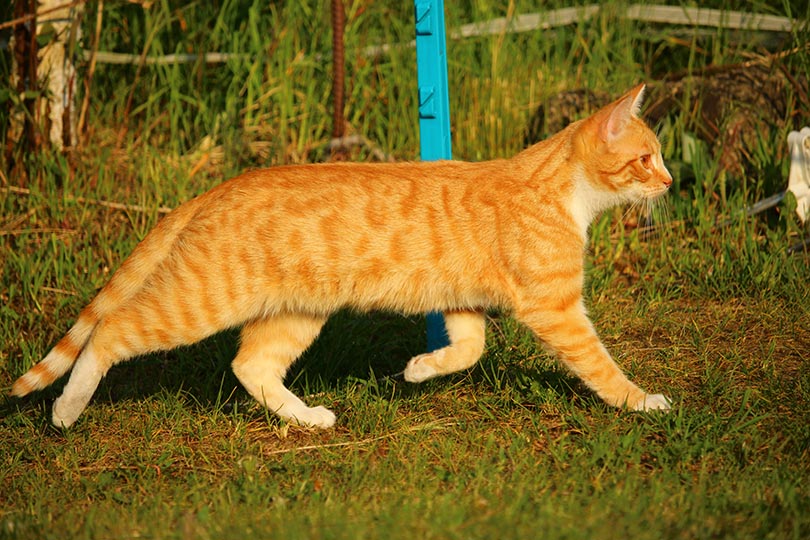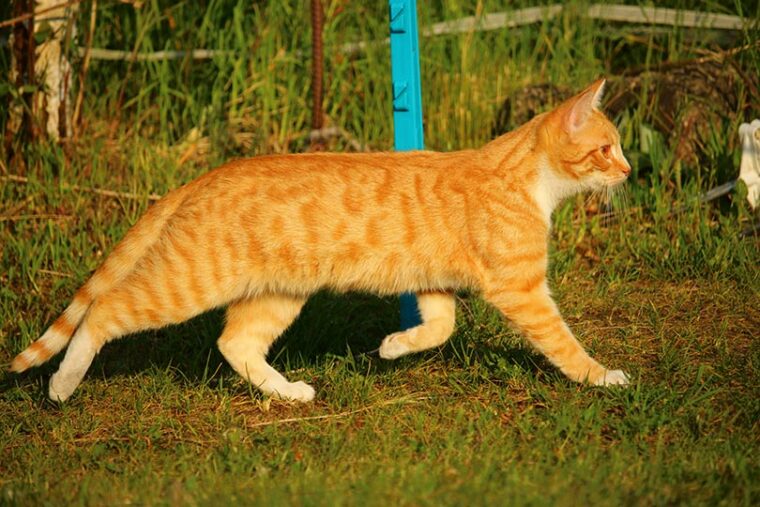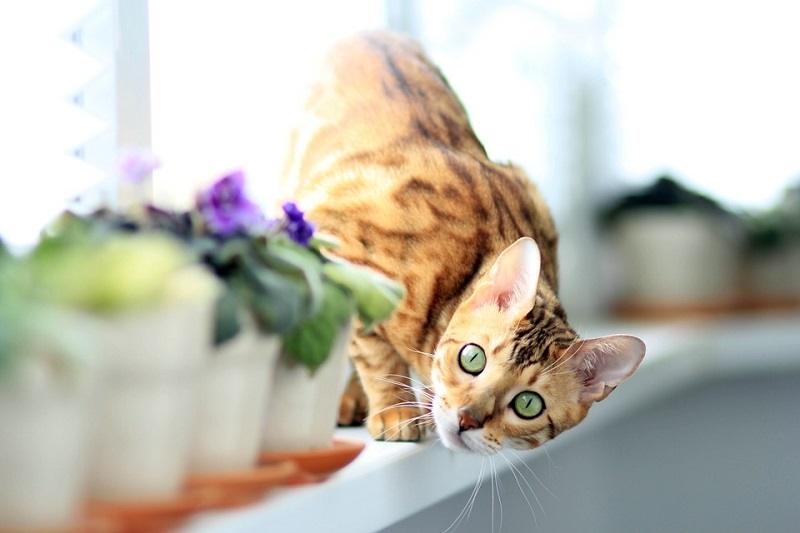
[ad_1]

The Bengal cat is a cherished cat breed by cat lovers worldwide, and you don’t have to settle for just one color or pattern.
Today, we’re shifting our focus on one of the most popular types of Bengal cats, the Orange Bengal. The Orange Bengal is a type of brown Bengal with dark rosettes and green eyes. The only difference is the fur coloring.
Orange Bengals have luxurious dark orange fur that covers a slender body. But these cats are far from fragile. Bengal cats are part of a wild ancestry that shows through in their personality and during playtime.
To better understand the Orange Bengal, let’s take a closer look at its history.

The Earliest Records of the Orange Bengal Cat in History
Before Bengal cats became an official breed in the late 1980s, people used to keep wild cats as pets. A popular option was the Asian Leopard Cat (Prionailurus bengalensis), a small forest-dwelling cat found primarily in India, Southeast Asia, and nearby islands.
During the New Stone Age, Leopard cats formed good relationships with Chinese farmers because they kept the rodents at bay. Sometime after 3000 BCE, farmers started keeping domestic cats instead. Regardless, people were always attracted to the wild Asian Leopard Cat, and some royal households kept them as pets.
By the time the world hit the mid-20th century, the Asian Leopard Cat population wasn’t doing well. Numbers were declining fast because of poaching. Something had to be done, or the world may never see the Asian Leopard Cat again.
Conservationist Jean Mill decided to take matters into her own hands and, in 1963, crossed an Asian Leopard Cat with a domestic cat. She continued doing so until she successfully had a cat breed with wild markings and a tame personality.
How the Orange Bengal Cat Gained Popularity
People in the past tried to breed an Asian Leopard Cat with a domestic cat, but Jean Mill was the first to do so successfully. By the 1980s, the world finally had the Bengal cat in various patterns and colors, including orange.
After 1986, breeders started experimenting more with patterns and colors. Around this time, people began seeing different colors besides the standard brown.
Formal Recognition of the Orange Bengal Cat
In 1986, The International Cat Association (TICA) acknowledged the Bengal as an experimental breed. There weren’t any specific standards, and various colors and patterns were accepted, including Bengals with dark orange fur. By 1991, Bengals were officially recognized as a breed and gained championship status. They worked to become one of the most popular cat breeds available today.

Top 3 Unique Facts About the Orange Bengal Cat

1. The Bengal Name Comes From the Latin Name of the Asian Leopard Cat
The official Latin name for the Asian Leopard Cat, Prionailurus bengalensis, is how the Bengal adopted its name. Jean Mill wanted to acknowledge the breed’s wild roots and chose the name Bengal from the Asian Leopard Cat’s binomial nomenclature.
2. Bengal’s Have a Long Haired Version
If you’re a fan of longhaired cats, you’re in luck. Bengals, including the Orange Bengal, can have long hair. However, it’s rare to find any Bengal with this feature, let alone an Orange Bengal. TICA is the only cat association that’s accepted a longhaired Bengal as a suitable variant. So, if you’re willing to do some research (and have a lot of patience), you can find a Bengal with longhair.
3. Bengals Help Discourage People From Buying Expensive Furs
Jean Mill wanted a cat breed that discourages people from purchasing expensive, exotic cat furs. She thought that if the purse looked like their friend’s housecat, it was unlikely shoppers would buy the fur.
Does the Orange Bengal Cat Make a Good Pet?
Bengals are wonderful cats to keep as pets. However, they require more work than your average domestic cat. These cats have a lot of energy to burn and can easily frustrate an owner who isn’t prepared to handle a Bengal. Even though Bengals are generations removed from the Asian Leopard Cat, part of that wild instinct is still hotwired into their DNA.
With Bengals, you should expect several cat trees and shelves in the house. You’ll also want to take your cat on walks to help it burn energy. On top of that, daily playtime is a must.
The nice thing about Bengals is they make up for this by hardly ever vocalizing. They also don’t shed much, so you won’t need to worry about weekly brushing and bathing unless you have a longhaired Bengal.
But as long as you can meet the energy requirements of a Bengal, this cat breed will love you unconditionally.

Conclusion
Bengals are genuinely one-of-a-kind cats. These wild felines hypnotize anyone with their dark orange fur and dazzling eyes. Combined with its wild side, the Orange Bengal is a treasure to have prowling around your house day and night.
If you wish to adopt one, ensure you’re ready for daily playtime and possibly a few questions here or there about your cat. Everyone will want to know where you got one.
Featured Image Credit: PxHere
[ad_2]
Source link

